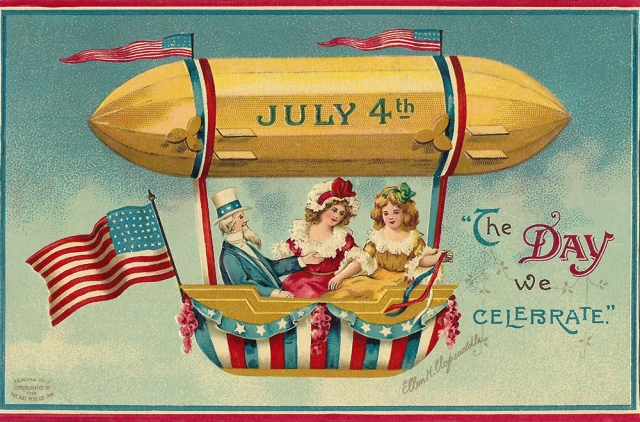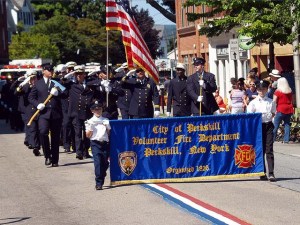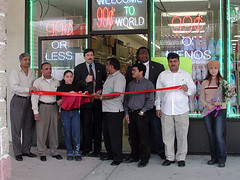Below is an article I was asked to write for the Cortlandt Living Magazine July 2018 edition. They wanted a short piece showing some of the important events associated with July 4th other than being Independence Day, especially local connections.
 It is officially known as Independence Day but more commonly referred to by its date, the Fourth of July. The birth of American Independence in 1776 has been celebrated ever since becoming a federal holiday in 1870. The day has brought us together with our families and communities to celebrate the freedom and liberties we enjoy because of the events and people who enabled those freedoms. Thanks to such organizations as the Peekskill Volunteer Fire Department, we have historically celebrated with a tradition of an annual parade and fireworks display. We look back fondly of our time growing up, watching or participating in those parades and the family cookouts that followed.
It is officially known as Independence Day but more commonly referred to by its date, the Fourth of July. The birth of American Independence in 1776 has been celebrated ever since becoming a federal holiday in 1870. The day has brought us together with our families and communities to celebrate the freedom and liberties we enjoy because of the events and people who enabled those freedoms. Thanks to such organizations as the Peekskill Volunteer Fire Department, we have historically celebrated with a tradition of an annual parade and fireworks display. We look back fondly of our time growing up, watching or participating in those parades and the family cookouts that followed.
Over time, many important tidbits of history can be associated with the July 4th date. Some with close local connections. Incredibly, three founding fathers and past presidents passed away on this date. Both John Adams and Thomas Jefferson in 1826, the 50th Anniversary of the signing of the Declaration of Independence, and James Monroe in 1831, who was also a continental soldier in the Revolutionary War.
While the Declaration was being signed and the Continental Army being mobilized, Fort Hill in Peekskill was a key base for Washington to defend the Hudson River and develop military strategy. Eventually, West Point served that purpose, which became the focus of the Benedict Arnold conspiracy. On July 4, 1802, West Point Military Academy was founded.
New York made history by abolishing slavery on July 4, 1827 and setting the stage for what would become a great Civil War between the states. One of the pivotal battles of that war was in Gettysburg, PA. After three days of bloody fighting, on July 4, 1863, the Confederate Army of Northern Virginia retreated from the battle. A number of the 700 Town of Cortlandt/Village of Peekskill area soldiers participated in that battle.
The Statue of Liberty, a symbol for freedom and independence, was deeded as a gift from France on July 4, 1884. At the statue’s dedication two years later, famous area resident and orator Chauncey Depew gave a lengthy speech celebrating the day. He clearly saw the significance of the moment and praised the cooperation of countries that made it possible. Originally known as The Bartholdi Statue of Liberty Enlightening the World, the Statue of Liberty officially became a U.S. National Monument in 1924 and has been the responsibility of the national parks Service since 1933.
Above all, the symbol for Independence Day has been the stars and stripes of the American Flag. As kids, we made sure we had special devices attached to our bike’s handlebars holding an array of mini-flags and our tire spokes were threaded with red, white and blue crepe paper as we rode up and down the streets following the parade. There was also the sight of most houses displaying a flag on the 4th of July or any other appropriate holiday. It was and still should be a simple way to show admiration and appreciation for living in such a wonderful country and it is an important way to say thank you to those men and woman who have served and continue to serve our country in the military. It is our responsibility to continue the tradition of decorating and displaying the American flag on Independence Day, for us and for our children. Let’s make sure our way of life is not taken for granted. We should enjoy a day of celebration, yet never forget why we celebrate.







Mr. Testa,
Many topics of interest within this article, which could be a basis for extended study. _______________________________________________________
“FORT HILL” however has been somewhat of a “SILENT” thorn in my side for near a generation or so.
As indicted as “fort(s)” on some early maps, those 1857-1914 available from RUMSEY), wooded structures to house a relatively large number of Continental soldiers. Clearly, as is amplified by LOCATION, high with an open view of the GATEWAY, this was primarily designed to be a “DEFENSIVE” position,, from which to “not so quickly” deploy troops to circumvent approaches. That “HILL” could have relatively easily been surrounded, perhaps after a dark nightfall, preventing escapes. The HILL would have been one(1) of perhaps three(3) such defensive positions allowing maximal sight distances, aided telescopically, another becoming the property of the Ferris Family, becoming Dean Ferris Florists, the top(and eastward) of Hudson Avenue. Mobilization ordered therefrom.
WASHINGTON deemed West Point as the “most strategic position of the Revolutionary War”, but he had NOT chosen the Point as nascent Headquarters of the Revolutionary Army. What he actually meant by “strategic” was not defined, and quite well may have functionally been “deception”, a lure to the English, prompting disposal of their STEEP downfield battleship, so left with few to defend.
There were “no cannons” on Fort Hill, and the “remains” were quick to deteriorate, leaving not much to find of importance, and less than what has been unearthed at 5000 year old sites in Egypt and Mesopotamia, yet has been only 200+ years past, a time framed drop in the bucket.
Rick Politi.